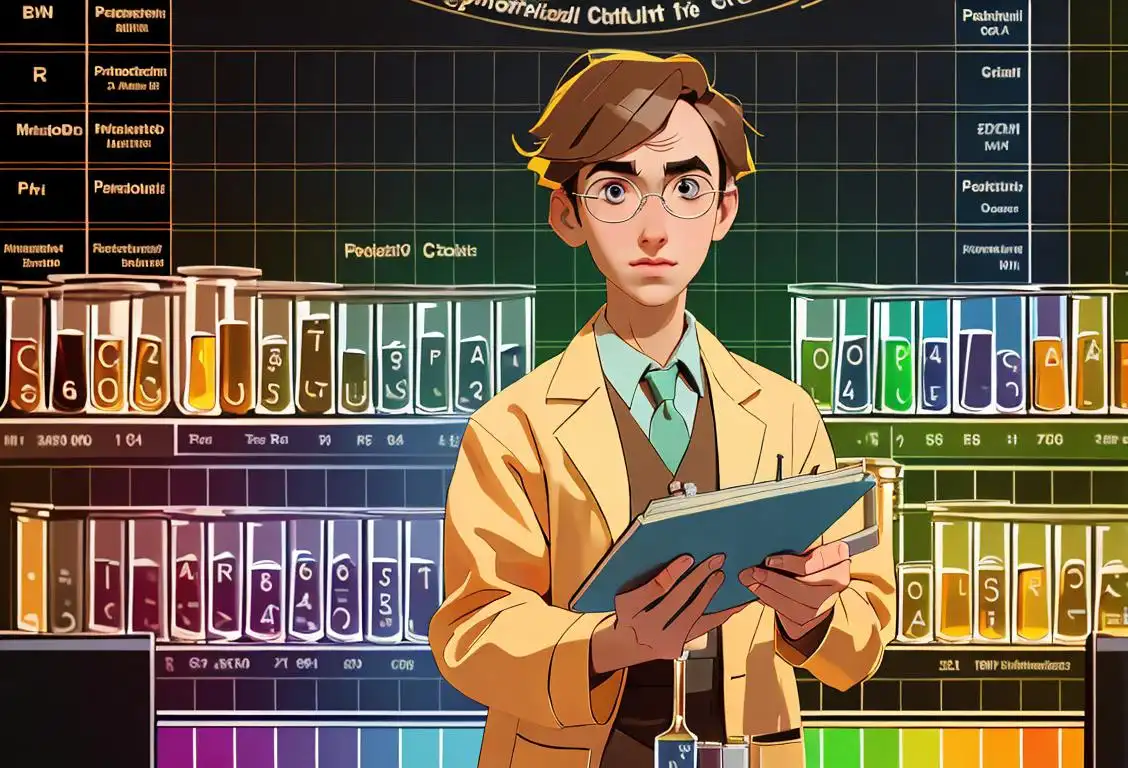National Oceanography Centre Open Day

Welcome to the National Oceanography Centre Open Day, your ticket to exploring the wonders of the deep blue sea! Dive into a world of marine discoveries and get ready to make a splash on this special day. Whether you're a seasoned sailor or just a landlubber with a thirst for knowledge, this event is sure to leave you in awe of the ocean's mysteries.
When is Oceanography Centre Open Day?
It's national oceanography centre open day on the 10th May.
Discovering the Depths
Are you ready to embark on a fascinating journey into the world of oceanography? The National Oceanography Centre Open Day is your chance to delve deep into the endless wonders that the ocean has to offer. From mesmerizing marine life to cutting-edge research vessels, this event brings together scientists, students, and enthusiasts alike to celebrate our vast and mysterious seas.
With a variety of captivating exhibits, interactive displays, and informative talks, the Open Day offers something for everyone. Whether you're interested in understanding the impact of climate change on marine ecosystems or want to discover the latest technologies used in ocean exploration, the National Oceanography Centre has got you covered.
Get up close and personal with the creatures that call the ocean home at the mesmerizing aquarium. Marvel at the vibrant colors of tropical fish, witness majestic sharks gliding through the water, and maybe even spot a playful dolphin or two. The aquarium is a perfect opportunity to learn about the importance of marine conservation and the delicate balance of life beneath the waves.
Unleashing Your Inner Captain
This open day is not just a passive event – it's a chance for you to become the captain of your own ship. Take a virtual voyage on one of the state-of-the-art research vessels and experience the thrill of navigating uncharted waters. Unleash your inner explorer as you learn about the cutting-edge technologies used to map the ocean floor and collect vital data that helps us understand the complex dynamics of our planet.
If you're feeling adventurous, you can even try your hand at steering a remotely operated vehicle (ROV) or a glider. These incredible machines allow scientists to explore the deepest and most remote parts of the ocean, collecting valuable samples and images that help unravel the secrets of our watery world.
The Science of Fun
No open day is complete without a dash of fun, and the National Oceanography Centre knows how to deliver. Hop aboard the marine-themed rides and let the waves of excitement carry you away. Test your knowledge at the marine trivia quiz and see if you've got what it takes to become the ultimate sea expert.
For the little sailors in your crew, the Open Day offers plenty of activities to keep them entertained. From face painting to hands-on experiments, they'll have a blast while learning about the wonders of the ocean. Who knows, you might inspire the next generation of marine scientists!
History behind the term 'Oceanography Centre Open'
1947
The Birth of Oceanography
In 1947, the field of oceanography was still in its early stages of development. Scientists were just beginning to explore the vast depths of the ocean and study the fascinating ecosystems and processes that existed there.
1930
Formation of the Scripps Institution of Oceanography
In 1930, the Scripps Institution of Oceanography was established in La Jolla, California. The institution aimed to promote the study of the oceans through research, education, and exploration. It quickly became a leading center for oceanographic research and played a pivotal role in advancing the field.
1872
Exploring the Seas: The Birth of Oceanography
In 1872, the world's first dedicated oceanographic research expedition set sail. The HMS Challenger embarked on a four-year voyage to explore the oceans and map their depths. This landmark expedition laid the foundation for modern oceanography by collecting extensive data on water temperature, currents, marine life, and geological formations.
1941
Establishment of the Scripps Institution of Oceanography
In 1941, the Scripps Institution of Oceanography was established in La Jolla, California. It was led by renowned oceanographer Dr. Harald Sverdrup. The institution aimed to study the various aspects of the world's oceans, including their physical, chemical, and biological characteristics.
1872
The Earliest Oceanographic Research Expeditions
In 1872, the first oceanographic research expeditions were conducted by the British Royal Navy. These expeditions aimed to investigate the physical and biological properties of the oceans. They laid the foundation for studying the world's seas and gathering crucial scientific data.
1960
Expansion and Collaborations
During the 1960s, the Scripps Institution of Oceanography expanded its research capabilities and started collaborating with other oceanography centers worldwide. This collaboration allowed scientists to share data, knowledge, and resources, leading to significant advancements in the field of oceanography.
1919
Establishment of Scripps Institution of Oceanography
In 1919, the Scripps Institution of Oceanography was founded by the University of California. This institution played a vital role in promoting oceanographic research and education. It became a center for studying various disciplines related to the oceans, including marine biology, geophysics, and marine geochemistry.
1961
Establishment of Oceanography Centers
By 1961, the importance of oceanographic research was widely recognized, leading to the establishment of specialized centers dedicated to the study of the ocean. These centers brought together scientists, researchers, and experts from various disciplines to collaborate and advance our understanding of the world's oceans.
1919
The Birth of Marine Laboratories
In 1919, the first modern oceanographic research institution, the Scripps Institution of Oceanography, was founded. Located in La Jolla, California, it became a pivotal center for marine science research and education. The establishment of marine laboratories like Scripps marked a turning point in the study of the oceans, providing dedicated facilities and resources for oceanographers to conduct their investigations.
1950
Emergence of Open Oceanography Centers
During the 1950s, oceanography centers dedicated to open research and collaboration started to arise globally. These centers were designed to facilitate the open exchange of scientific knowledge and data among researchers from different nations. This approach greatly accelerated the progress of oceanography by fostering international cooperation and the sharing of resources.
1975
Expanding Public Access to Oceanography
In 1975, many oceanography centers began to promote public accessibility and engagement with the field. They organized events such as 'oceanography center open days' to welcome visitors, including students, scientists, and the general public. These open days provided an opportunity to showcase the fascinating research, technology, and discoveries in oceanography, inspiring a new generation of scientists and raising public awareness about the importance of our oceans.
1983
Open Access to Oceanography Centers
In 1983, a significant development occurred with the concept of open access to oceanography centers. This meant that these centers allowed public access to their facilities, resources, and knowledge, providing an opportunity for the general public to learn about and appreciate the wonders of the ocean. It marked a turning point in making oceanography more accessible and inclusive.
1946
The Emergence of Oceanographic Institutions
In 1946, the Woods Hole Oceanographic Institution (WHOI) was established in Massachusetts. WHOI became renowned for its cutting-edge research vessels, including the iconic research vessel Atlantis. The institution made significant contributions to the understanding of oceanic processes, such as the discovery of undersea mountain ranges and hydrothermal vents.
1973
Public Access and Outreach Initiatives
In 1973, the Scripps Institution of Oceanography focused on increasing public awareness and understanding of the oceans. They established educational programs, public lectures, and organized open days to welcome the public into their research facilities. These initiatives aimed to engage and educate the wider community about the importance of oceanography.
1946
The Birth of UNESCO's Intergovernmental Oceanographic Commission (IOC)
In 1946, the Intergovernmental Oceanographic Commission (IOC) was established as part of the United Nations Educational, Scientific and Cultural Organization (UNESCO). The IOC aimed to promote international cooperation in oceanographic research and understanding. It has since become a leading international body in oceanography and has facilitated numerous collaborative studies and initiatives.
1961
The Launch of the First Oceanographic Research Vessel
In 1961, the United States launched the first dedicated oceanographic research vessel named RV (Research Vessel) Anton Bruun. This state-of-the-art ship was fully equipped with advanced scientific instruments and laboratories, enabling scientists to conduct in-depth oceanographic studies and explore marine environments more effectively.
2000
Digital Revolution and Online Open Oceanography
With the advent of the internet and digital technologies, oceanography centers embraced online platforms to expand their reach and accessibility. They started developing virtual 'oceanography centers open' initiatives, offering online resources, lectures, and virtual tours of research vessels and laboratories. This digital revolution enabled people from all over the world to engage with oceanography, irrespective of geographic location, leading to greater global awareness and participation in oceanographic research.
1998
Advancements in Ocean Technologies
1998 witnessed remarkable advancements in ocean technologies, which played a crucial role in expanding the capabilities of oceanography centers. Tools such as remotely operated vehicles (ROVs) and autonomous underwater vehicles (AUVs) allowed scientists to explore previously inaccessible depths and gather valuable data. These technological breakthroughs revolutionized the field, enabling researchers to delve further into the mysteries of the ocean.
1960
Advancements in Deep-Sea Research
In 1960, the bathyscaphe Trieste, piloted by Jacques Piccard and Don Walsh, descended to the deepest part of the world's oceans, the Challenger Deep in the Mariana Trench. Their successful dive reached a record depth of approximately 10,900 meters, opening up new possibilities for deep-sea exploration. This groundbreaking achievement fueled further interest and investment in oceanographic research.
1985
Inauguration of Oceanography Centre Open Day
In 1985, the Scripps Institution of Oceanography introduced the annual Oceanography Centre Open Day. It became a special day for the institution to open its doors to the public, allowing visitors to explore research vessels, laboratories, and interact with scientists. The event aimed to showcase the cutting-edge research being conducted at the institution and inspire the next generation of oceanographers.
2010
Oceanography Centers Going Global
By 2010, oceanography centers had gained prominence worldwide. These centers were not only limited to a few countries but had expanded across the globe, allowing for international collaboration in the field of oceanography. This global reach facilitated the sharing of expertise, data, and resources, leading to comprehensive and diverse research efforts that spanned across continents.
1971
Oceanography Centers and Open Research
By 1971, oceanography centers had begun to emerge worldwide, fostering international collaboration and open research efforts. These centers, such as the National Oceanography Centre in the UK, brought together scientists from various disciplines to study the oceans comprehensively. Open access to data and findings became increasingly promoted, enabling researchers worldwide to benefit from shared knowledge and accelerate advancements in oceanography.
1973
Establishment of Oceanography Centers
During the early 1970s, numerous oceanography centers were established worldwide, primarily focusing on research and education. These centers provided specialized facilities for studying various aspects of oceanography, such as physical oceanography, marine biology, ocean engineering, and marine geology. The opening of these centers allowed for more focused research and collaboration among oceanographers.
Present
Continued Success and Impact
Today, the Oceanography Centre Open Day continues to be an important annual event for the Scripps Institution of Oceanography. It provides an opportunity for the public to gain insights into the world of oceanography, learn about marine conservation efforts, and appreciate the significance of our oceans. This event has played a crucial role in raising awareness and fostering a deeper understanding of the marine environment.
Present
Oceanography Centre Open
Today, 'Oceanography Centre Open' represents a celebration of the rich history and progress made in oceanography. It signifies the openness, accessibility, and inclusivity of these centers, inviting people from all walks of life to explore and appreciate the marvels of the ocean. Through open days, educational programs, and public engagement, 'Oceanography Centre Open' encourages a deeper understanding and preservation of our oceans.
1982
World Oceans Day Commemoration
In 1982, the United Nations designated June 8th as World Oceans Day to raise awareness about the importance of the oceans and promote sustainable interactions with marine ecosystems. The establishment of this international observance further emphasized the significance of oceanography and its role in understanding and preserving the world's oceans.
1999
Expansion of Oceanography Research and Open Centers
From the late 1990s onward, the field of oceanography witnessed substantial growth, with the establishment of more research facilities and the opening of oceanography centers. This expansion allowed for increased collaboration, technological advancements, and a better understanding of the complex interactions that shape the oceans.
Did you know?
Did you know that only about 5% of the world's oceans have been explored? That means there's a whole lot of underwater mysteries waiting to be discovered!Tagged
fun nature education scienceFirst identified
10th May 2016Most mentioned on
10th May 2016Total mentions
24Other days
Oceanography Centre Open Day
Youth Science Day
Dna Day
Penguin Day
Periodic Table Day
Virus Appreciation Day
Fossil Day
Bat Appreciation Day
Stem Day
Mole Day








